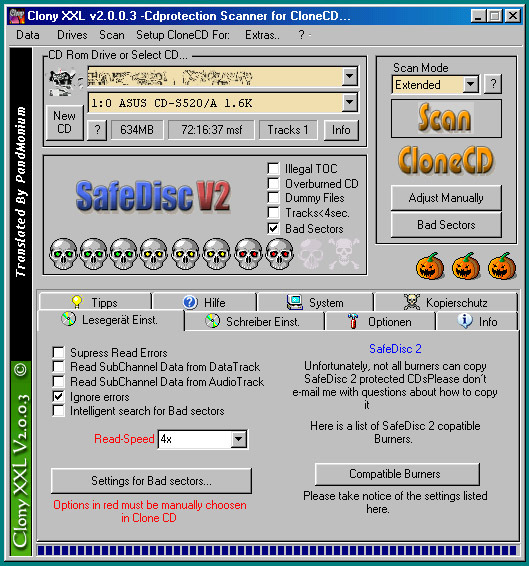Mysteries Of The CDRW and Back Ups Revealed
Copy Protection...What Protection?
Currently, for data software, there are at least 25 different data CD protection schemes of which we are aware. For audio CDs, there are only about five different protection schemes. As mentioned earlier, the development of these protection formats effectively expands the current Orange Book and Red Book CD industry standards as broadly as possible (to the point of breaking these standards, at times) in order to achieve the level of protection the company is seeking.
Not following the data and audio CD standards can lead to compatibility problems that are difficult to solve. Usually, when a compatibility problem is reported to the software manufacturer, the software manufacturer will just suggest purchasing another CD-ROM/ DVD-ROM drive, or to check with the manufacturer of your drive. This "pass the buck" approach to customer service reiterates the idea that so-called 'protections' bend the standards to the point that the protections actually no longer conform to all of the standards.
Philips has rebelled against the recording labels as of late, warning them that many of their proposed implementations for copy protection schemes break the rules for audio CDs in such a way that they may just create new compatibility nightmares. Some recording companies have countered that they never offered a guarantee that their audio CDs would be playable on PCs. Much of this argument centers around the use of the Compact Disc Digital Audio logo that is on almost all CDs. The Compact Disc Digital Audio logo is a mark that is supposed to represent compatible operation in other devices that bear the same mark.
We used Clony XXL to find a disc that was protected with Safedisc 2.0 for use as test disc 1.
Get Tom's Hardware's best news and in-depth reviews, straight to your inbox.
Current page: Copy Protection...What Protection?
Prev Page Introduction, Continued Next Page Copy Protection...What Protection? Continued